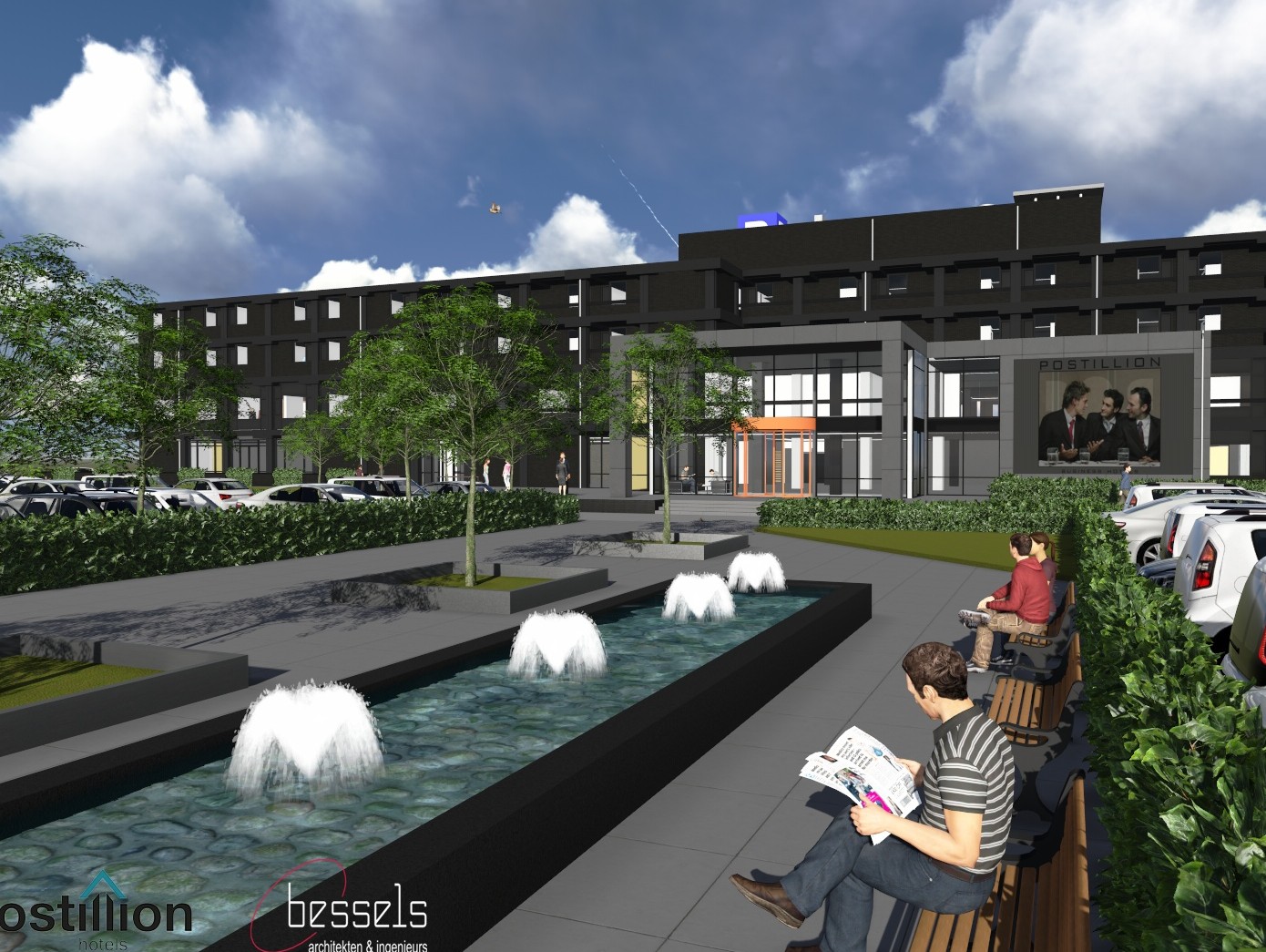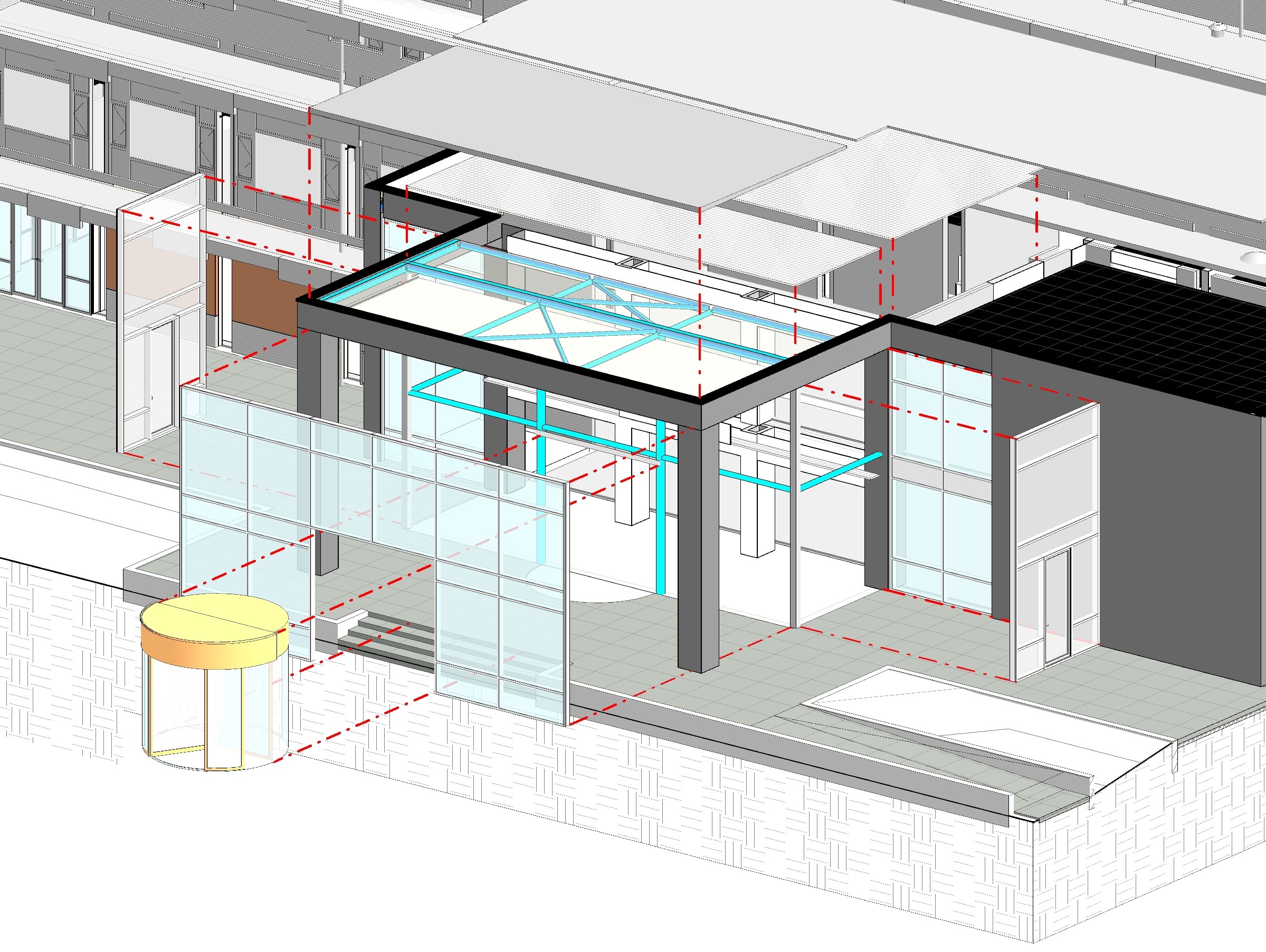
The construction industry has not yet reached the same stage as other industries which, once the prototype has been made, can produce millions of identical products. In the building sector things are still done differently: construction involves forming an alliance of convenience which, somewhere on a random building site with no facilities, has to continually reinvent the wheel for every project.
On Wednesday 21 May 2014, during his inaugural speech, Professor Jan de Wit from Saxion University of Applied Sciences in Enschede showed that it doesn’t have to be that way. He explained about a builder who had made 30% of his staff redundant but had nevertheless managed to produce 30% more in the past five years, plus with much better quality. He was capable of thinking differently, of going against the flow. The key to his business success was prefabrication.
At Bessels architekten & ingenieurs, we too recently chose to take a different approach when renovating a hotel in Dordrecht. Instead of assembling the bathroom pipes, hot and cold water pipes, the sewer system, electricity supply, control cables and suchlike for 80 rooms on site, this time we let our fitters connect the components together in the workshop on industrial mesh: that saved considerable time and effort. Similar benefits can be achieved with windows: they often become spattered with paint, floor adhesive and plaster during construction. Instead, deliver them clean and shrink-wrapped in clear plastic.
'Reinventing the wheel for every construction project will finally be a thing of the past'
Construction makes a disproportionately large contribution to waste production and transportation: 40% of all Dutch waste is produced by the building industry. The biggest culprit in construction is miscommunication – ordered but not delivered, delivered but not ordered, delivered too late, etc. This miscommunication often arises because so many subcontractors are involved in one building (sometimes up to 80). With a lot of workers coming from abroad, the language barrier plays a big role.
Many of the failure costs can be eliminated by introducing the BIM (Building Information Model). BIM is a digital, 3-dimensional building model which contains all the data relating to the design, construction and management process and which is used by everyone involved in the project. Construction drawings used to include the words ‘still to be decided’; in other words, let the man in the blue overall figure it out – and suffer the potential consequences. In BIM, each project partner works with the same information, which means that everyone can see what is happening everywhere. The information is continuously available and always up to date. We can really start ‘LEGO-ising’ in the construction industry at long last.
In 2011, Hennes de Ridder published a book in Dutch on ‘LEGO-ising construction’. He claims that a more evolutionary approach should be taken towards developing buildings, just as is done with cars, computers, televisions and aircraft. He identifies a trend which he calls ‘Darwinism for buildings’: the survival of the fittest. Those buildings that can be adapted to the changing world most quickly and easily will survive. The others will die out.
‘The basic structure remains the same but the cells change’
LEGO fits together seamlessly. Hence, in order to be able to LEGO-ise, the starting points must be clear. That’s why we survey existing buildings with a 3D laser and use the data to construct a 3D model of the structure so that the project ‘foundations’ are seamlessly aligned. The computer performs a clash control to ensure that certain activities or materials have not been planned in the exact same place, such as pipes, air-treatment systems and construction work. Then, back in the office, we make a 3D video which is ideal for use during planning meetings with the local council. In the case of the hotel project in Dordrecht, this resulted in our shortest-ever meeting with the Planning Officer: it took us just 9 minutes to gain permission for that complex building.

We refuse to accept that buildings are old and worthless after 15 years, with all the investment-related consequences that entails. But no factory is used precisely in line with its original design. Are you capable of seeing a building’s flexibility? One good example is a floor with a 20-metre span which weighs less (kg/m2) than a solid floor with a 9-metre span. Those floors are bolted together rather than being poured, which makes them easy to dismantle. The system was used for the first time in The Netherlands at the Floriade World Horticultural Expo in Venlo in 2012.

We are seeing the emergence of companies positioning themselves as suppliers of building structures which share the same DNA yet whose actual design depends on their location, purpose and moment in time. The basic structure remains the same but the cells change. That applies both to successive generations of buildings and to an individual building over the course of its life. In that case, reinventing the wheel for every construction project will finally be a thing of the past, to be replaced by learning and repetition effects. Design & Construct is making way for Research & Development.
Source: Bessels